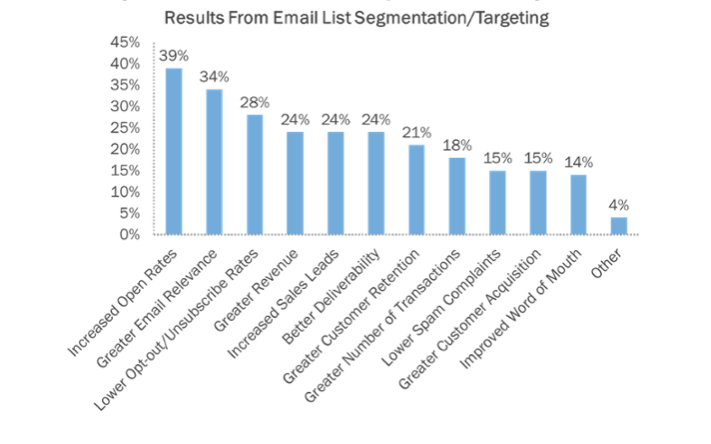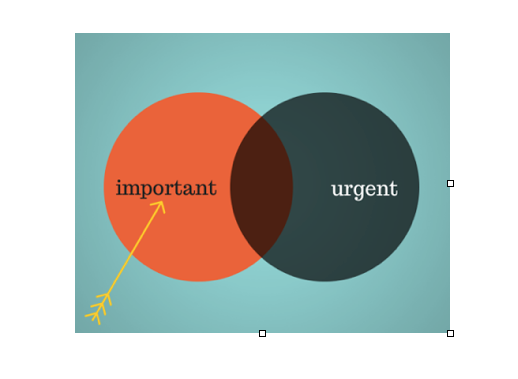Increase your email Open Rates using these strategies
Millions of emails hit inboxes every day. Many of those emails are either ignored or deleted straightaway without even opening them. That is why having a compelling email subject line is critical.
There is no point of having thousands and even tens of thousands in your email list when only handful of them actually open your emails. It does no good to you or to your business to have a mammoth email list, but microscopic open rate.
Getting your email to be opened and read in a crowded inbox is a big challenge, but a powerful subject line can make all the difference between being ignored and converting your leads.
Oh, subject lines. So challenging to write, yet so vital to the success of your email campaigns.Poor open rates is an issue that is confronting many internet marketers. There is both a science and an art to composing persuasive email subject lines that not only acts as baits for users to open your emails but to also take action once they open them.
In 2012, Epsilon’s fourth quarter email analysis showed that the average open rates was 27.4% and the average click through rate was 4.5%.
In other words, almost ¾ of people that you send emails don’t open them and when they open, only less than 5 in every 100 will bother to click any of the links.
That is a big problem for most internet marketers. This article explores powerful email newsletter subject lines strategies to win the email marketing war and tremendously increase your email’s open rates by as much as 203%.
This article is going to show you how to write irresistible email subject lines that get prospects to open the emails.
In a nutshell, here is what you are going to learn today:
- Calculating the Open Rate for Your E-Mail Marketing Campaign
- Best Practices for Email subject lines
- Case Studies: Best email subject lines for icreasing open rates
- How to time your emails to increase open rates
Calculating the Open Rate for Your E-Mail Marketing Campaign
If a five-year old came to you and asked, “What is email open rate?” what would you tell that kid?
Don’t scratch your head. Here is a simple graphic by Echogravity to explain it
Thus, email open rates measures the number of specific interactions with an email server after the e-mail is sent and it is expressed as a percentage of non-bounce rates. Your email is only counted as open when the recipient clicks a link in the email and enables the images in your email to display.
So email open rates is calculated by taking the number of emails opened and dividing it by the total non-bounced emails.
The good news is that you don’t need to scratch your head over this. All email marketing providers like Mail Chimp, Vertical Response, Benchmark Email etc provide email open rates metrics.
6-Steps to Improve Email Open Rates
You can improve your email open rates by following these six steps
Step 1: Be ultra-specific and useful—make sure the subject line is useful and relevant to your customer needs.
Step 2: Identify yourself: let them know who is sending the message
Step 3: be visually different: your subject line should standout visually. Use things like square brackets and don’t overcrowd the subject line.
Step 4: send timely emails: the timing is important. We’ll look at this in more details at the end of this article.
Step 5: Include a Call to Action *CTA*: ask questions to make your readers take action.
Step 6:Test your subject lines: Use A/B testing to test your emails to see which subject lines work best.
Best Practices for Email subject lines?
Now that you know what your email open rate is, it is time to improve it. According to Hubspot, having an open rate of lower than 15% should be a cause for alarm. Acquiring those emails isn’t easy, so you shouldn’t take open rates for granted.
According to MailChimp’s exhaustive recent study, using clever subject lines can tremendously increase your open rates. And beyond just a fancy subject line, you must offer an in-depth content for your subscribers to open through the links and even take action.
So the first step towards improving your email marketing is to learn how to write attention-grabbing email subject lines. This video by April Bowles-Olin will teach you how to write compelling email subject lines.
One of my favourite pieces of advice from April is when April urges marketers to send themselves a test email to see how the email compares to other emails in their inboxes and see whether they would click on that email. The idea is to be brutally honest with yourself so that you can wear the shoes of your subscribers.
Let us look at some of the best practices for good email subject lines that sell.
According to Mailchimp researchers, the best subject lines are unusually short, evocative, and descriptive and give recipients good reasons to open their emails. When writing best email subject lines, it is important to keep the audience in mind and to test the keywords and phrases so as to maximize subscriber engagement.
Tips for writing irresistible email Subject Lines
Enticing your audience to engage with your email is a struggle for many marketers and small business owners. Here are 5 tips to writing irresistible subject lines.
1. Cleverness vs. Clarity
In most cases, branding and marketing is about standing out, coming up with something catchy and being memorable. However, the email subject line is not the right place to practice this.
Your recipients don’t want unwanted surprises. They want to have a clear understanding of what to expect when they click on your message. So the subject line should have a worthwhile messages.
Look at the below examples.
Email A is not clear. The subject line doesn’t provide clarity and the message is ambiguous at first glance. Email B on the hand is short, precise and very clear.
AWeber Communications conducted a research in 2011 and discovered that an email subject line that is clear gets 541% more clicks than one that is ambiguous or one that is trying to be clever.
In other words, when it comes to email marketing, remember this simple statement: Clarity is GOOD; Cleverness is BAD
Just ensure the recipients clearly understand the content of the email by the subject line. That alone can great increase the number of customers who click your CTA.
People don’t actually want to try to figure out what you are trying to tell them. They simply do not have that time.
Here are examples of clever and clear email subject lines
Clever Subject Lines
- ABC Associates’ Always Awesome Amber Adams
- It’s finally here
- Look no further than your favourite site
- The early bird catches the worm
- Great gifts to stir you up
Clear Subject Lines
- 10 awesome gifts for her this valentine
- Increase your conversion rates by 200% using these strategies
- 5 ideas to improve your kitchen
- Why I paid $10,000 for my web design and how it has paid off
2. Use actionable language
One way to trigger action is to use actionable language. You don’t necessarily have to use verbs—though it certainly helps.
I received this email from edX. This is one way to use actionable language effectively.
Use actionable verbs like “download”, “take”, “enrol”, “Book”, “reserve”, “buy” etc.
However, you don’t have to rely on verbs to use actionable language. This give you more room to play with words. For example, “Don’t Miss This Season’s Thanksgiving Coupons.”
3. Personalize when possible
Email segmentation is the best strategy for personalizing your message. The following data from eMarketer shows the importance of email segmentation
You notice that highly segmented email and targeted subject lines have 39% higher open rates and lower unsubscribe rates. This in turn increases sales leads and greater customer retention.
Before sending that email, ask yourself the following questions:
· Who are the recipients?
· What are the likes and dislikes of the recipients?
· What excites my subscribers? What are their fears?
4. Embrace convention, be obvious
Emails need to be conventional. It may be boring but that is the only way to get people to open them. Every component of the email need to be clear to the recipient.
Ø Make your links obvious: creating, big, conspicuous and clickable (tappable) buttons is the way to go. Make them wide enough so that they can be tapped with a thumb for those on mobile devices. Ensure the texts are bold and links are in contrasting colors. Do not have too many links and let them be well spaced.
Ø Make the benefits of opening the email obvious: don’t bandy words. Go straight to the point. This brings us to the next point.
5. Align Your Subject Line Copy and Email Copy
It is crucial for your CTA and landing page to align. The same principle applies when crafting email subject lines and the message body. Readers should be able to read in the email message what the subject line promises. If there is a mismatch, you aren’t going to receive high click-through rates and at worst, most people will just unsubscribe.
6. Say less
Don’t write extra-long subject lines. Don’t write blocks of paragraphs. Be very specific and cut the extra wordings. Your email message and subject line should be scannable. Keep it short: 50 characters or less works best. In a study involving more than 200 emails, MailChimp found that email subject ines with 50 characters or less have higher clicks.
7. Don’t use urgency in every single email you send out
If every other email you send is urgent, then people eventually become used to your antics and you lose credibility. Say it is urgent only when it is truly urgent.
In any case, it is better to point out the importance of the message or offer rather than its urgency unless it is time-bound.
To wrap this section up, I found this interesting infographic by Unbounce and I think you should look at it.
Case studies: 10 Best Email Subject Lines that Increased Open Rates
Here are 101 best email subject lines that increase open rates by 203%. Study them and notice the patterns. Whether knowingly or unknowingly, they have all the elements we have discussed so far.
Timing is everything
The time you send your email also affects its open and click-though-rates. Know your audience and use A/B testing to find the right time to send email. The time aspect is the final piece in the 203% puzzle. If you get your time right, you can experience as much as 60% higher open rates.
When Nathan Williams sent emails within 24 hours to new signups, he experienced 60% open rates. Having said that, you can’t be absolutely sure what the best time to send emails should be.
So it is just a matter of experimentation and trial and error
Here are some resources to help you get started:
- KISSmetrics infographic on the best time to send emails
- According to Rick Stamberger, the best time to send emails is when your audience is most likely to be online. This depends on industry and geographical locations.
- According to Kevin Gao, founder of comm100, Mondays are not the best days to send emails, as well as weekends. So your best bet is Wednesday, Thursday and Friday.
Ultimately, you are going to have to test it.


